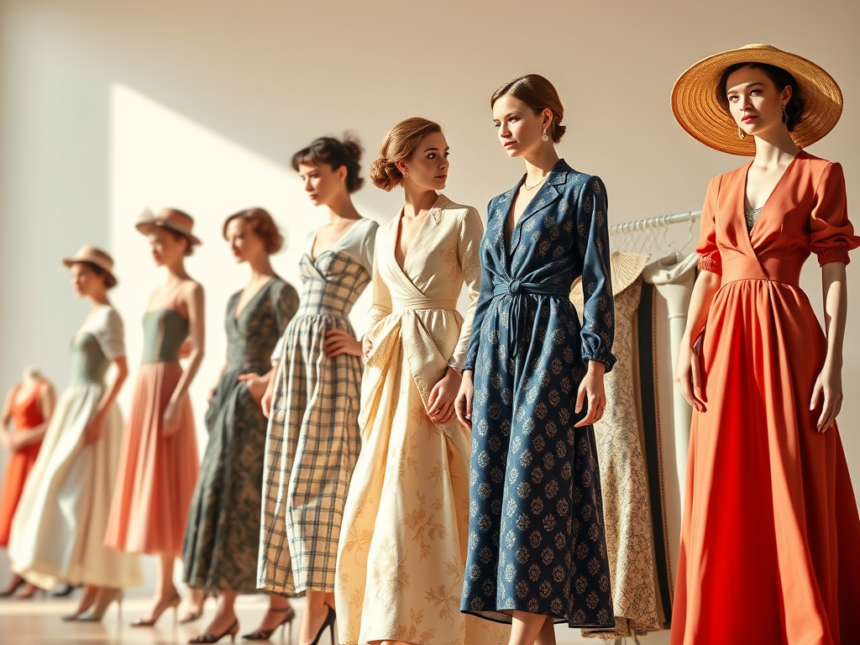Fashion tells the story of who we are and where we’ve been. Women’s fashion, in particular, has evolved dramatically over time, reflecting society’s values, challenges, and progress. From the structured corsets of the 19th century to today’s sustainable and inclusive trends, women’s fashion is a journey through history, culture, and innovation.
A Look Back: Historical Perspectives
19th Century: Structured Elegance
In the 1800s, women’s fashion was about shaping the body into idealized forms.
- Corsets were essential, sculpting an hourglass figure.
- Dresses featured voluminous skirts and intricate tailoring, symbolizing elegance and social status.
20th Century: A Century of Change
The 20th century brought rapid shifts in women’s fashion as societal roles evolved.
- 1920s: The flapper era introduced shorter hemlines and loose-fitting dresses, reflecting women’s growing independence.
- 1950s: Christian Dior’s designs reintroduced the hourglass silhouette, with cinched waists and full skirts emphasizing femininity.
- 1960s and Beyond: Fashion became more experimental, reflecting freedom and counterculture movements.
Modern Fashion: Embracing Diversity and Individuality
Today’s women’s fashion celebrates self-expression, breaking free from rigid norms. Designers draw inspiration from around the world to create styles that are both personal and inclusive.
Key Trends of the 21st Century
- Athleisure: A blend of comfort, style, and practicality for active lifestyles.
- Sustainable Fashion: Eco-friendly materials and ethical production are becoming central to modern fashion.
- Vintage and Retro: Thrift shopping allows blending nostalgic styles with modern trends, creating unique looks.
Cultural Impact: Fashion as Expression
Fashion goes beyond clothing—it’s a way to communicate identity and values.
Social Movements in Fashion
- Movements like body positivity and gender fluidity inspire trends that challenge traditional beauty standards.
- Designers and influencers use fashion to promote inclusivity and social change.
The Power of Media
Social media platforms like Instagram and TikTok have revolutionized fashion:
- Runways are no longer the only trendsetters—anyone can influence fashion.
- Influencers create instant trends, bringing diverse styles to global audiences.
The Role of Technology in Fashion
Innovation is shaping how fashion is created, shared, and consumed.
Key Advances in Fashion Technology
- 3D Printing: Enables custom and futuristic designs.
- Virtual Dressing Rooms: Use augmented reality to let shoppers try on clothes online.
- E-commerce: Expands access to global styles, making fashion more accessible.
Emerging technologies promise even greater transformations, from sustainable production to personalized shopping experiences.
Conclusion: Fashion as a Mirror of Society
Women’s fashion is a reflection of the times, shaped by cultural, social, and technological forces. Its evolution—from corsets to sustainable chic—tells the story of progress and individuality. As we move forward, fashion continues to be a platform for dialogue, innovation, and creativity, empowering women to express themselves and shape the future.




